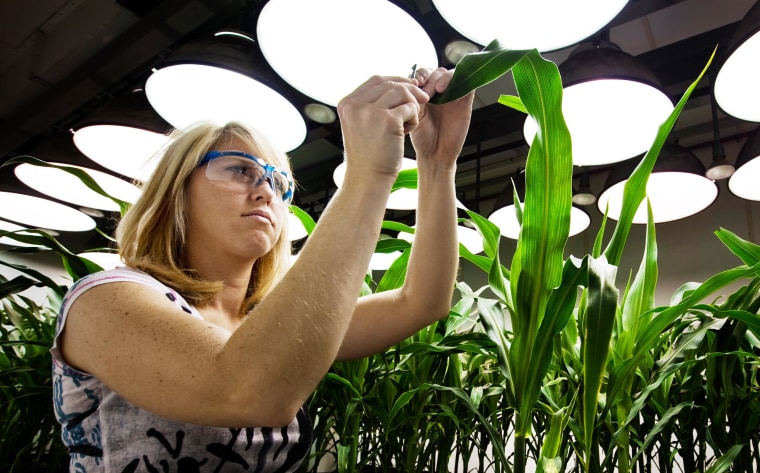Genetically engineered plants that have been approved for sale don’t need labels — and people can be assured they’re safe to eat, the Food and Drug Administration said Monday.
The FDA issued new rules about labeling GM plant foods at the same time as last week’s approval of the first genetically modified (GM) animal approved for the U.S. food market — a salmon engineered to grow faster than usual.

The FDA said the salmon was safe to eat and was nutritionally equivalent to other, non-GM salmon on the market. It also said GM salmon didn’t pose a risk to wild salmon because it would be farmed inland from any oceans.
The agency sent out a reminder about the requirements for plant foods on Monday.
"GE foods don’t present greater safety concerns than foods developed by traditional plant breeding."
“The agency is not aware of any valid scientific information showing that foods derived from genetically engineered plants, as a class of foods, differ from other foods in any meaningful way. GE (genetically engineered) foods don’t present greater safety concerns than foods developed by traditional plant breeding,” it said.
“However, if a food derived from a genetically engineered plant is materially different from its traditional counterpart, the labeling of that food must disclose such differences," the FDA said.
For instance, canola oil that’s been genetically engineered to have more lauric acid — a so-called good fat — must be labeled “laurate canola oil."
“Similarly, soybean oil containing higher levels of oleic acid than conventional soybean oil must be labeled ‘high oleic soybean oil’,” FDA said.
Otherwise, it’s up to the manufacturer to label any food. This sets the U.S. apart from the European Union, Australia and China, which require the labels. Consumer and environmental groups have long pressed for the FDA to require labels on GM foods, but the FDA says there’s no need.
“Food manufacturers may voluntarily label their foods with information about whether the foods were not produced using bioengineering, as long as such information is truthful and not misleading,” the FDA said.
Foods that are genetically engineered have new traits added by splicing in DNA or other genetic material directly into the chromosome, instead of using the more time-consuming process of cross-breeding plants in the hope of introducing the desired traits.
Sometimes it works well, like crops engineered to resist the herbicide Roundup. Other times, it flops, like the Flavr Savr tomato that was meant to stay firm as it ripened on the vine but didn’t. The process worries some consumers, who fear the new genes might somehow be harmful to them or to the environment.
The FDA says it checks both carefully before approving any new genetically modified plant.
"In 2013...bioengineered corn varieties made up 90 percent of the acreage of planted corn."
For labels, the FDA doesn’t particularly like the term “GMO," mostly because the “O” refers to the word “organism" — and it’s not really clear what that means.
Phrasing the FDA likes better:
- "Genetically engineered” or “This product contains cornmeal from corn that was produced using modern biotechnology.”
- “Some of our growers plant soybean seeds that were developed through modern biotechnology to be drought tolerant.”
And if food makers want to say their food’s free of genetically engineered ingredients, they can say something along the lines of:
- “Not bioengineered.”
- “Not genetically engineered.”
- “Not genetically modified through the use of modern biotechnology.”
- “We do not use ingredients that were produced using modern biotechnology.”
It’s very difficult to avoid genetically engineered plants, the FDA pointed out.
“In 2013, in the United States, bioengineered soybeans made up 93 percent of the acreage of planted soybeans, bioengineered cotton made up 90 percent of the acreage of planted cotton, and bioengineered corn varieties made up 90 percent of the acreage of planted corn,” it said.
“In addition, bioengineered sugar beets accounted for 95 percent of the acreage of planted sugar beets in the 2009-2010 crop year.”
